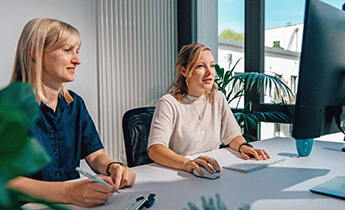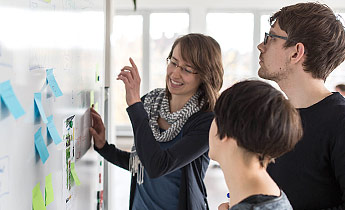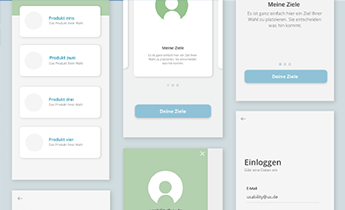Voice User Interfaces (VUI)
Digital voice assistants like Alexa, Siri and others are finding their way into more and more households and becoming little everyday helpers. They let you know when dinner is ready or play your favorite music. But like in every real relationship, communication problems can occur. It is therefore even more important to consider the user perspective when designing voice-based interfaces and to ensure a good UX of the voice application by testing it with users.

What is special about Voice Interfaces?
More than one in three people in Germany already uses voice assistants such as Alexa, Siri, and Google. According to forecasts, this trend will continue. But voice-based systems differ significantly from visual user interfaces in their forms of interaction. Instead of clicks, swipes & co., the user's voice takes center stage.
The requirements for such systems are therefore completely different from those for visual user interfaces. Emulating the complexity of human speech and choosing the right mental model for interacting with the user are the biggest challenges here. In user research, conception and testing of a voice-based application, these factors should therefore be taken into account.
Our approach to user-centered Voice Design
Understand Requirements (User Research)
In order to design a voice interface that best meets the requirements of the users, we want to understand what distinguishes the future users and what problems they currently have. We also find out what possible use cases there are for the voice interface.
Together with you, we analyze what you already know about your customers and in which areas we should get to know them even better - e.g. with observations & contextual inquiries or diary studies.

Design and Prototyping
Based on the research results, we design concrete dialogues that cover typical use cases of the voice interface. We take into account which utterances should activate the voice interface and which relevant variables (slots) or dependencies exist in the conversation.
For example, when booking a car-sharing service, such variables would be: Start time, End time, Vehicle type and the location where the car should be available.
When developing dialogues, we make sure to choose a tonality that fits your company's appearance and identity. Together with you we determine, e.g. How formal or informal is the expression?


In a prototype, voice commands are linked with the corresponding responses of the system. Complex linkages are also already possible. This brings the most important processes and interactions to life at an early stage. We use various design tools to develop the prototype that can then be opened and "addressed" on the computer or even tested with various voice assistants, such as Alexa. A connection with a visual interface is also possible.
Testing with Users
Just like visual user interfaces, voice-based user interfaces can best be tested in a usability test with users from the target group.
In such a test, we check whether the application responds to the right keywords (utterances) and follows the users' mental model. In a voice usability test, our experts listen to users from your target group solving typical tasks and identify areas where usability problems occur.
Even early stages of design can be tested and evaluated, such as a dialogue diagram. So-called wizard-of-oz testing is also possible, in which the system's planned responses are simulated by a real person.

Can Voice User Interfaces also be tested remotely?

As with the standard usability test, the testing of your voice-based application can also be conducted remotely. Neither you nor the test participants need to be on site. In the usability test, we connect to the test participants via telephone and/or via a remote tool. By using high-quality telephone hardware, we ensure that there is no loss of quality in the voice transmission during remote testing. Additional integration of visual content and user interfaces on desktop, smartphone and tablet is also possible. Via our secure live stream, you and other stakeholders can follow the usability test from anywhere.
What are the results?
As a result, you receive a concept for a voice interface that represents various use cases of your users in the form of dialogue diagrams. These dialogue diagrams combine the findings from all phases of the user-centered design: the identified use cases from user research, the designed dialogues from the design phase, and the integrated optimizations that we deduced from user feedback in the usability test.
Do you have specific questions about your project with a voice-based application? We will be happy to advise you. Free of charge and without obligation.

Other interesting usability methods:
All methodsWhat do I get out of usability measures?
-
Satisfied customers and users
Higher customer loyalty, reduced bounce rates
-
Better product quality
Easy to use products, reduced errors
-
Increased revenue and profit
Conversion rate optimization
-
Increased productivity
Employees, working efficiency, less operation errors
-
Decreased development time and costs
More agile processes, avoidance of failing products
-
Decreased support & training costs
Intuitive-to-use products that do not require any training
-
Win new customers by reducing exit rates
Reduced bounce rate through landing page optimization
-
User Experience as a positive product feature
Competitive differentiation

 Usability-Testing
Usability-Testing Expert Review
Expert Review Contextual Inquiries
Contextual Inquiries Prototyping
Prototyping